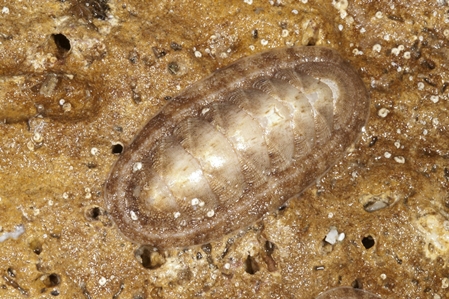General Description
Flattened oval shaped body with 8 shell sections (valves) surrounded by a fleshy girdle. Colour variable from pale yellow to brown. Up to 5 cm long.
Biology
This is a common species in rock pools along most of Victoria's open coast.
Habitat
Under rocks in tidal pools on exposed coast, to depth of 28 m.
Reefs
Coastal shores
Distribution guide
Southern Australia.
Species Group
Sea snails and shells › Chitons
Depth
Shore (0-1 m)
Shallow (1-30 m)
Water Column
Max Size
5 cm
Diet
Herbivore
Commercial Species
No
Global Dispersal
Native to Australia
Identify
Conservation Status
- DSE Advisory List : Not listed
- EPBC Act 1999 : Not listed
- IUCN Red List : Not listed





